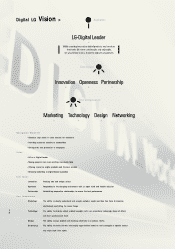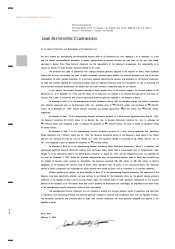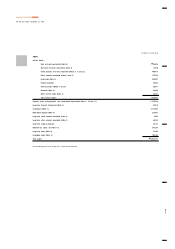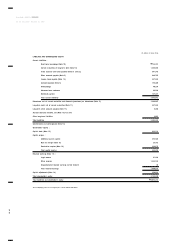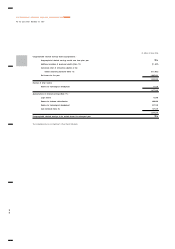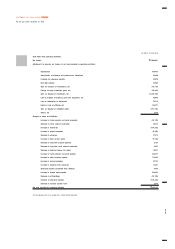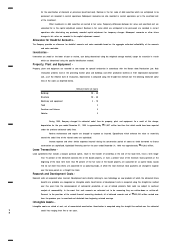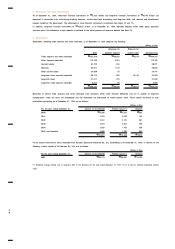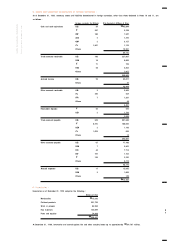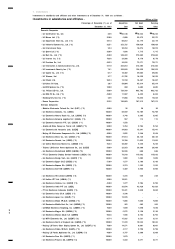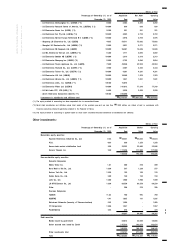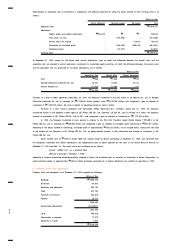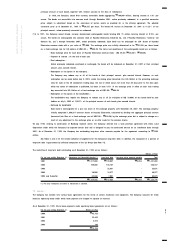LG 1999 Annual Report Download - page 29
Download and view the complete annual report
Please find page 29 of the 1999 LG annual report below. You can navigate through the pages in the report by either clicking on the pages listed below, or by using the keyword search tool below to find specific information within the annual report.
7
2
1. The Company :
LG Electronics Inc. (the “Company”) was incorporated in 1959 under the Commercial Code of the Republic of Korea to manufacture and sell
electronic products. The Company is a member of the LG Group, which comprises affiliated companies under common management direction. In
1970, the Company offered its shares for public ownership. As of December 31, 1999, the Company has outstanding capital stock of
₩
632,116
million, including non-voting preferred stock of
₩
95,478 million (see Note 15). The Company’s common shares are listed on the Korean stock
exchange and its depositary receipts (“DRs”) are listed on the London and Luxembourg stock exchanges.
2. Summary of Significant Accounting Policies :
The significant accounting policies followed by the Company in the preparation of its financial statements are summarized below.
Basis of Financial Statement Presentation -
The accompanying financial statements have been extracted from the Company’s Korean language financial statements that were prepared using
accounting principles, procedures and reporting practices generally accepted in the Republic of Korea. These standards vary from
International Accounting Standards and the accounting principles generally accepted in the country of the reader. The financial
statements have been translated from Korean into English, and have been formatted in a manner different from the presentation under
Korean financial statement practices. Certain supplementary information included in the Korean language statutory financial statements
but not required for a fair presentation of the Company’s financial position, results of operations or cash flows is not presented in the
accompanying financial statements. Accordingly, the accompanying financial statements are not intended to present the financial position,
results of operations and cash flows in accordance with accounting principles and practices generally accepted in countries and
jurisdictions other than Korea.
As permitted by the revised financial accounting standards generally accepted in the Republic of Korea, the Company has
presented its financial statements for the year ended December 31, 1999 only.
The preparation of financial statements requires management to make estimates and assumptions that affect amounts reported
therein. Due to the inherent uncertainty involved in making estimates, actual results reported in future periods may differ from those
estimates.
Investments in Debt and Equity Securities -
All investments in equity and debt securities are initially carried at cost determined by the weighted average method, including incidental
expenses. In the case of debt securities, cost includes the premium paid or discount received at the time of purchase. The following
paragraphs describe the subsequent accounting for securities by the type of security.
Investments in marketable equity securities of non-controlled investees are carried at fair value. Temporary changes in fair
value are accounted for in the capital adjustment account, a component of shareholders’ equity. Declines in fair value which are
anticipated to be permanent are recorded in current operations after eliminating any previously recorded capital adjustment for
temporary changes. Subsequent recoveries or other future changes in fair value are recorded in the capital adjustment account.
Investments in non-marketable equity securities of non-controlled investees are carried at cost, except for declines in the
Company’s proportionate ownership of the underlying book value of the investee which are anticipated to be permanent, which are
recorded in current operations. Subsequent recoveries are also recorded in current operations up to the original cost of the investment.
Investments in equity securities of companies over which the Company exerts significant control or influence (controlled
investees) are recorded using the equity method of accounting. Differences between the initial purchase price and the Company’s initial
proportionate ownership of the net book value of the investee are amortized over 5 years using the straight-line method. Under the
equity method, the Company records changes in its proportionate ownership of the book value of the investee as current operations,
capital adjustments or adjustments to retained earnings, depending on the nature of the underlying change in book value of the
investee.
Unrealized profit arising from sales by the Company to the equity-method investees is fully eliminated. Unrealized profit arising
from sales by the equity-method investees to the Company or sales between equity-method investees is also eliminated.
Premiums and discounts on debt securities are amortized over the life of the debt using the effective interest method.
Investments in debt securities which the Company has the intent and ability to hold to maturity are generally carried at cost, adjusted
NOTES TO FINANCIAL STATEMENTS
For the year ended December 31, 1999



